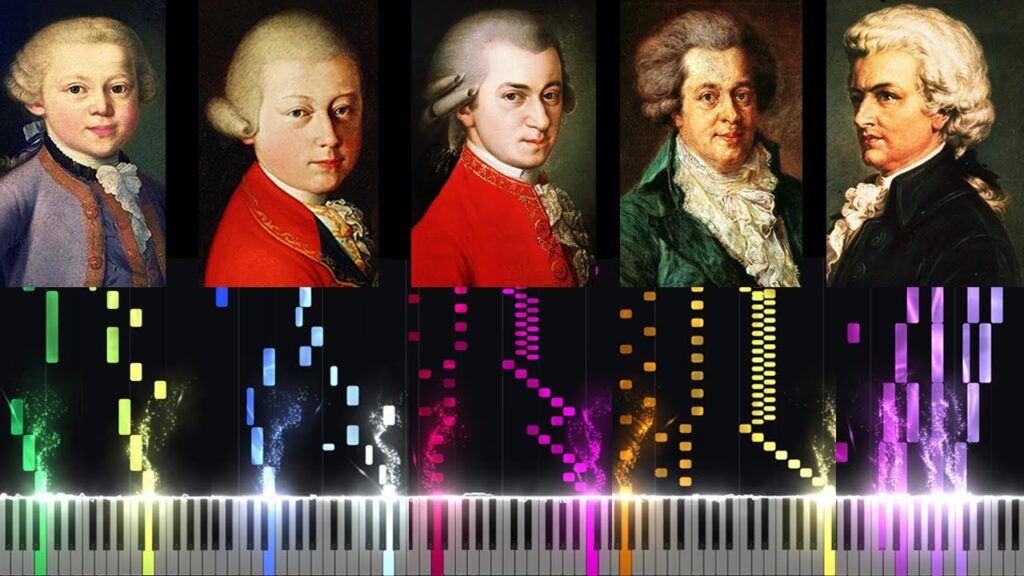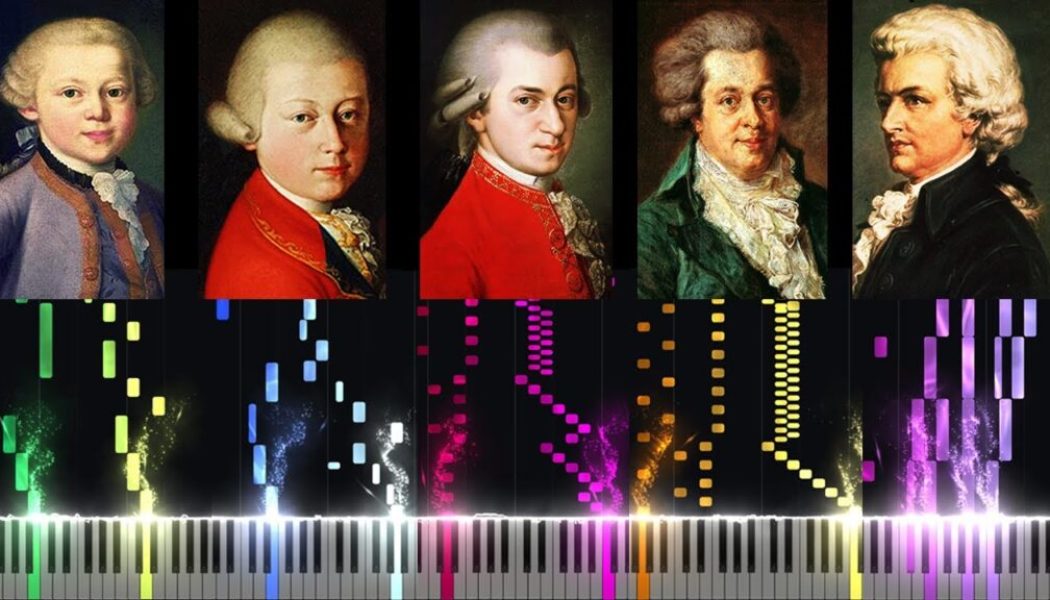
More than a quarter of a millennium after he composed his first pieces of music, different listeners will evaluate differently the specific nature of Wolfgang Amadeus Mozart’s genius. But one can hardly fail to be impressed by the fact that he wrote those works when he was five years old (or, as some scholars have it, four years old). It’s not unknown, even today, for precocious, musically inclined children of that age to sit down and put together simple melodies, or even reasonably complete songs. But how many of them can write something like Mozart’s “Minuet in G Major”?
The video above, which traces the evolution of Mozart’s music, begins with that piece — naturally enough, since it’s his earliest known work, and thus honored with the Köchel catalogue number of KV 1. Thereafter we hear music composed by Mozart at various ages of childhood, youth, adolescence, and adulthood, accompanied by a piano roll graphic that illustrates its increasing complexity.
And as with complexity, so with familiarity: even listeners who know little of Mozart’s work will sense the emergence of a distinctive style, and even those who’ve barely heard of Mozart will recognize “Piano Sonata No. 16 in C major” when it comes on.
Mozart composed that piece when he was 32 years old. It’s also known as the “Sonata facile” or “Sonata semplice,” despite its distinct lack of easiness for novice (or even intermediate) piano players. It’s now cataloged as KV 545, which puts it toward the end of Mozart’s oeuvre, and indeed his life. Three years later, the evolutionary listening journey of this video arrives at the “Requiem in D minor,” which we’ve previously featured here on Open Culture for its extensive cinematic use to evoke evil, loneliness, desperation, and reckoning. The piece, KV 626, contains Mozart’s last notes; the unanswerable but nevertheless irresistible question remains of whether they’re somehow implied in his first ones.
Related content:
Hear All of Mozart in a Free 127-Hour Playlist
Hear the Pieces Mozart Composed When He Was Only Five Years Old
Read an 18th-Century Eyewitness Account of 8‑Year-Old Mozart’s Extraordinary Musical Skills
Mozart’s Diary Where He Composed His Final Masterpieces Is Now Digitized and Available Online
What Movies Teach Us About Mozart: Exploring the Cinematic Uses of His Famous Lacrimosa
Based in Seoul, Colin Marshall writes and broadcasts on cities, language, and culture. His projects include the Substack newsletter Books on Cities, the book The Stateless City: a Walk through 21st-Century Los Angeles and the video series The City in Cinema. Follow him on Twitter at @colinmarshall or on Facebook.









